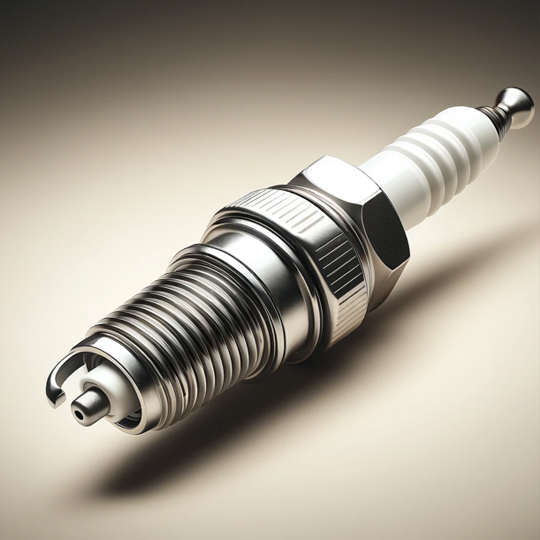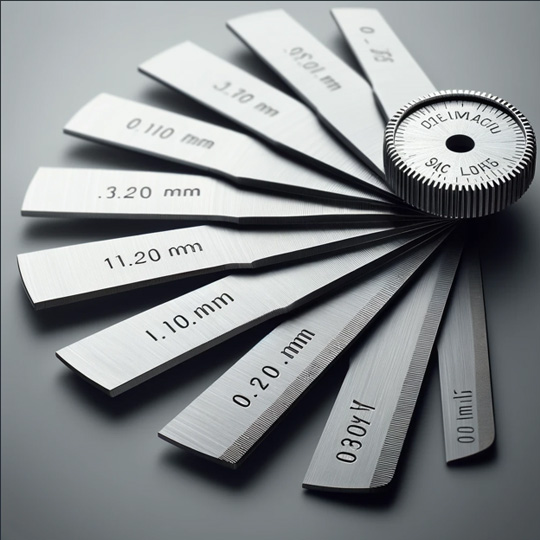In the realm of automotive maintenance, setting the correct spark plug gap is crucial for engine performance, especially the spark plug gap on a 350 Chevy engine. This guide will explain the importance of the spark plug gap and the recommended settings for a 350 Chevy and provide a step-by-step tutorial on how to check and adjust the gap properly. By ensuring your spark plugs are gapped correctly, you can improve your engine’s efficiency, power output, and fuel consumption.
Understanding the spark plug gap on a 350 Chevy engine
Definition and Importance

The spark plug gap is the distance between the ground electrode and the center electrode of a spark plug. This gap is critical because it directly affects the spark’s ability to ignite the air-fuel mixture within the engine’s combustion chamber. An ideal gap ensures a vital spark, leading to efficient combustion.
For the 350 Chevy, a small-block engine widely respected for its versatility and performance, the correct spark plug gap is essential for optimal engine operation. Setting the gap can lead to engine misfires, poor fuel economy, and reduced power.
Recommended spark plug gap on a 350 Chevy engine
The recommended spark plug gap for a 350 Chevy typically ranges from 0.035 to 0.045 inches. However, this specification can vary depending on the specific model year and the spark plugs used. It’s crucial to consult the vehicle’s owner’s manual or a reliable automotive resource to confirm the exact specifications of your engine.
How to Check and Set spark plug
Tools Needed

- ·Spark plug gap tool or feeler gauge
- ·Spark plug wrench
- Step-by-Step Guide
Checking the Spark Plug Gap
Preparation:
Ensure the engine is off and cool. Remove one spark plug at a time to avoid mixing up, which could affect engine performance.
Measuring the Gap:
Insert a spark plug gap tool or a feeler gauge between the electrodes at the tip of the spark plug.
Check the measurement on the tool or gauge to see if it matches the recommended gap for your engine. If using a feeler gauge, you should feel a slight resistance as the gauge passes between the electrodes.
Adjusting the Gap:
If the gap is too small, carefully bend the outer electrode away from the center electrode using the correct part of the gap tool.
If the gap is too large, gently bend the outer electrode towards the center electrode. Use light pressure and avoid contact with the center electrode to prevent damage.
Rechecking:
After adjusting, measure the gap again to ensure it is within the recommended specifications. Repeat the adjustment process if necessary.
Installation:
Once the correct gap is achieved, reinstall the spark plug using a spark plug wrench. Be careful not to overtighten, as this can damage the threads or alter the gap.
Tips for Accurate Gapping
Constantly adjust the gap by manipulating the ground electrode only. Avoid touching or applying pressure to the center electrode as it is more fragile and can be easily damaged.
Use a dedicated spark plug gap tool for the most accurate results. These tools are specifically designed to help adjust the gap without damaging the electrodes.
Perform this check and adjustment routine as part of regular vehicle maintenance, especially before long trips or after any engine performance issues.
Common Mistakes to Avoid
Overgapping:
Setting the gap too wide can lead to spark arcing, resulting in misfires and poor engine performance.
Undergapping:
A gap that is too narrow may not provide enough spark energy, leading to incomplete combustion and a reduction in engine efficiency.
Uneven Gapping:
Make sure the gap is uniform. An uneven gap can cause erratic firing and unstable engine performance.
Conclusion
Setting the correct spark plug gap on a 350 Chevy engine is a fundamental aspect of maintaining the engine’s performance. By following the detailed steps to check and adjust the spark plug gap, you ensure that your engine runs efficiently and effectively. Regular maintenance, including spark plug inspection and gapping, will not only extend the life of your engine but also enhance your vehicle’s overall performance. Remember, precision is critical, and even minor adjustments can make a significant difference in how your engine performs. Always refer to the manufacturer’s specifications for the best results.

